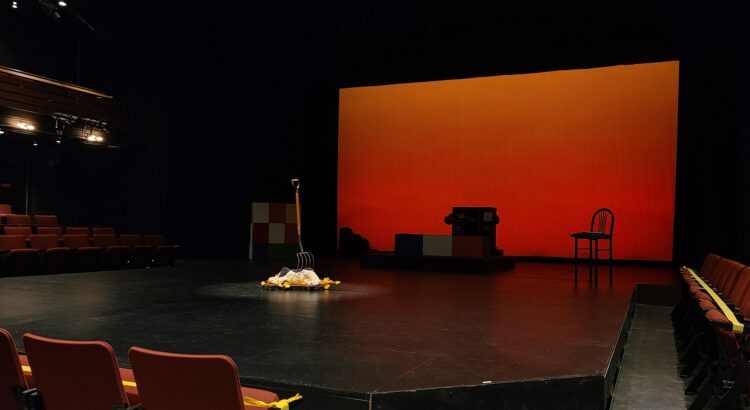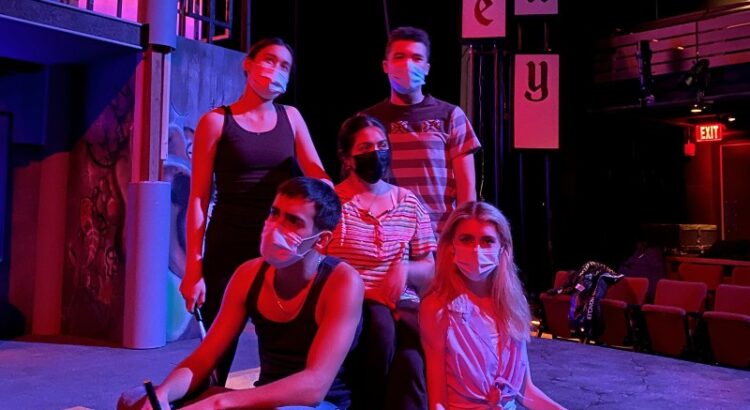8:00pm • Friday, January 13, 2023 • Arthur Miller Theater • SPOILER ALERT
Ann Arbor Civic Theatre’s production of The Curious Incident of the Dog in the Night-time was a painful but moving exploration of self-discovery, neurodivergency, abuse, and family. The small troupe of 8 actors and actresses did an excellent job of maneuvering between, according to the program, 15 locations, 20 characters, and 49 scenes. Their acting felt tender and genuine, their expressions and voices never played out of proportion, so it felt like I was looking in on a few moments from the characters’ lives.
I also appreciated the way the organization took care to prepare for the play’s portrayal of a protagonist on the autism spectrum appropriately: seeking actors with neurodivergencies to cast in the role of Christopher, forming a relationship with the Autism Alliance of Michigan and creating a dedicated role in their production staff for an ASD Ally/Advocate. Drew Shaw, who played Chris, the protagonist, brought the character to life with authenticity and enthusiasm.
That said, the play was also much darker than I expected, with several upsetting scenes depicting emotional and physical abuse. Mr. Boone lies to Chris about Mrs. Boone’s death; in many scenes, he swears at his son, in one instance hitting him; ultimately, he describes his abusive behavior as an accident and coerces Chris’s forgiveness by buying him a puppy. Chris’s mother, who was in an affair with a neighbor and left the family two years before the play, writes to Chris in a letter that she left because dealing with his autism put too much of a strain on her relationship with her husband and her own personal liberty. I found few redeemable qualities in either of Chris’s parents, so when the ending of the play treated their burgeoning reconciliation as a happy ending, I was left with a bad taste in my mouth.
The path Chris took to courage and independence was, for me, the only truly uplifting part of his play. As he untangles the mystery of his neighbor’s murdered dog, he also unearths family secrets which eventually motivate him to travel alone across the country, a daunting mission for any 15-year-old. The play ends with Chris facing the audience, surrounded by the rest of the cast, in wonder of all he has accomplished, asking “Does this mean I can do anything?” We as the audience were left to answer that question, torn between the reality of his difficult home situation and his heart-warming optimism.






